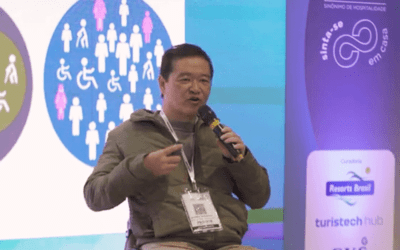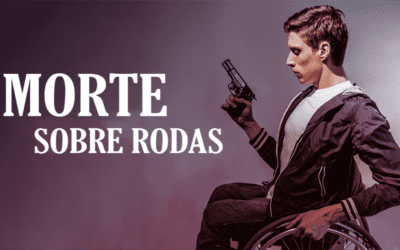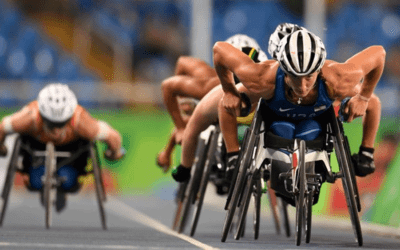
City to be more disabled-friendly
KUALA LUMPUR City Hall (DBKL) wants 75% of the common areas in Kuala Lumpur city to be accessible to everyone, including those with disabilities and the elderly, in 10 years.
DBKL Project Implementation and Building Maintenance Department deputy director Ch’ng Gaik Bee @ Dalilah Bee Abdullah, however, said this did not include residential areas as these were considered private properties.
“The two factors that need to be considered to make this target possible are the costs and ensuring there are no obstructions during the construction period.
“If we have full financial support, we can proceed.
“As for the obstructions, sometimes we find things such as utility cables and pipes while digging and it can cost millions to move one pipe,” she said during a seminar on Accessible Tourism at the Malaysia Tourism Centre (MaTiC) in Jalan Ampang, Kuala Lumpur.
She was one of the speakers at the seminar that was organised by the Tourism and Culture Ministry and Japan Centre.
Earlier, she explained that Accessible Tourism involved many inter-related sectors such as user-friendly transportation, seamless footpaths, access to accommodation, tour operator facilities and access to public spaces to enable tourists to get the best experiences in Kuala Lumpur.
 The sidewalk in front of Avenue K in Jalan Ampang has tactile paving for the visually impaired.
The sidewalk in front of Avenue K in Jalan Ampang has tactile paving for the visually impaired.
She said the Kuala Lumpur Tourism Master Plan 2014-2025 aims to elevate Kuala Lumpur to a top-of-mind tourism city and this included ensuring the city was accessible to all.
She said part of DBKL’s plan to promote accessible tourism was to ensure that all new construction projects must be universally designed for it to be approved and existing buildings should be retrofitted to comply with the guidelines.
“This is compulsory under the Disability Act 2008. If we receive public complaints that the architect deviated from the original plan, we will investigate and if it is true, we will write to the Board of Architects Malaysia and they can take the necessary action,” she said.
Tourism and Culture Ministry secretary-general Datuk Ab. Ghaffar A. Tambi said that according to the World Health Organisation, more than a billion people were estimated to live with some form of disability.
“This corresponds to about 15% of the world’s population,” he said during his speech when launching the event.
He said in this regard, countries were increasingly developing accessible destinations that did not cater adequately to the needs of people with disabilities including infants and the elderly.
“This seminar is timely and in line with the growing worldwide attention paid to accessible tourism,” he said.
He said the Tourism and Culture Ministry had already set a standard for every tourism infrastructure development and facilities must comply with the Malaysia Standard MS1184 — Universal Design and Accessibility in the Built Environment.
“Fittings that need to be installed in every tourism project include ramps, handrails, accessible parking spaces, proper signage and toilets that are disabled-friendly.
“Besides that, under the Tourist Accommodation Premises Classification, at least one room with facilities for the disabled must be provided in accordance with OKU Act 2007,” he said.
Ghaffar noted that the Malaysian Inbound Tourism Association offered special tourism packages catering to disabled tourists.
“These packages include facilities such as wheelchairs and tour vans/buses with ramps.
“The two most popular tourist destinations for the disabled are the Lake Gardens in Kuala Lumpur and the National Elephant Conservation Centre in Kuala Gandah,” he said.
He added that other interesting packages for the disabled that were coming soon included scuba diving in Tioman Island and race car driving at the Sepang National Circuit.
DBKL in its plan to promote accessible tourism aims to make 75% of public areas suitable for people with disabilities and elderly
Source: The Star
Compartilhe
Use os ícones flutuantes na borda lateral esquerda desta página
Siga-nos!
Envolva-se em nosso conteúdo, seus comentários são bem-vindos!
1 Comentário
Enviar um comentário
Você precisa fazer o login para publicar um comentário.
Artigos relacionados
Acessibilidade no ESG. Equipotel aborda o tema para o turismo.
Acessibilidade no ESG, para o mercado do turismo. Equipotel aborda a importância da inclusão da pessoa com deficiência.
Morte Sobre Rodas. Filme inclusivo foi candidato ao Oscar.
Morte Sobre Rodas. Dois protagonistas do filme, são pessoas com deficiência, um usuário de cadeira de rodas e outro com paralisia cerebral.
Paralimpíada de Paris 2024. A deficiência não é um limite.
Paralimpíada de Paris 2024. A cidade luz sedia o maior evento esportivo do mundo para as pessoas com deficiência.






Very encouraging news. I am going to publish this on wheelchairworld.org!